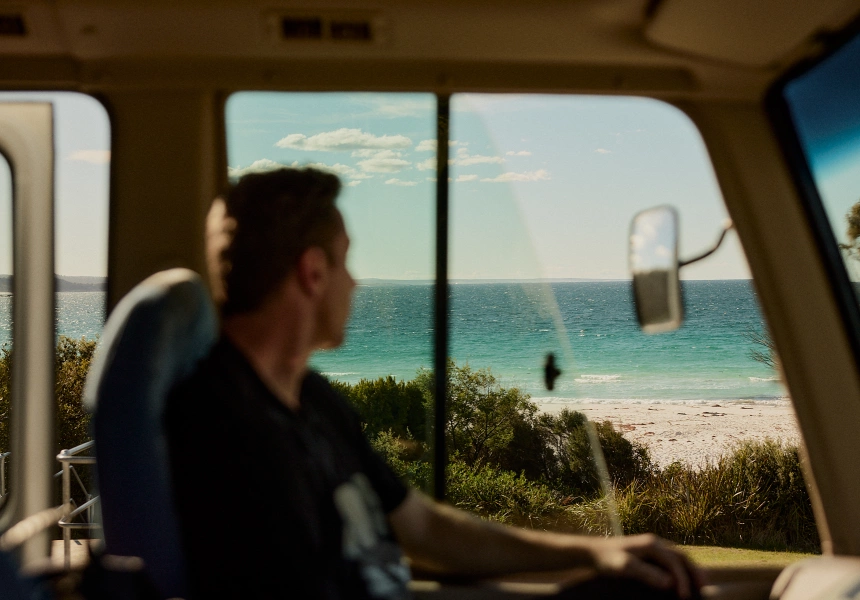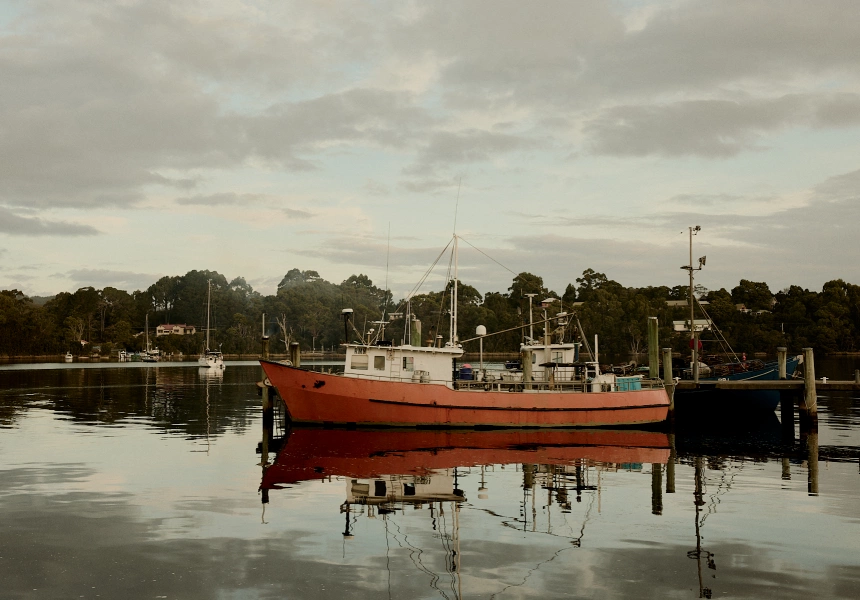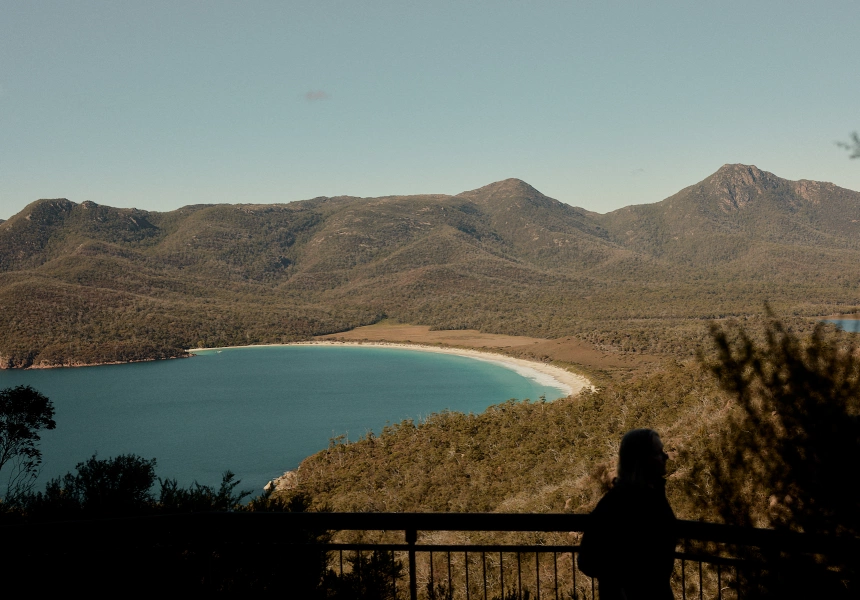When mainlanders plan trips to Tasmania, Hobart and Launceston are two common starting points – if not for their airport connections, then their wealth of options for sleeping and eating.
Of course, there’s lots to see outside the island’s two biggest cities, which sit roughly (very roughly) at north and south on the compass. What about east and west? If you’re keen to see just about everything the island state has to offer, we suggest circumnavigating it, with overnight stops in the pleasant seaside towns of Strahan and Bicheno.
That’s exactly what I did recently, on Intrepid’s six-night Highlights of Tasmania tour.
Never miss a moment. Make sure you're subscribed to our newsletter today.
SUBSCRIBE NOWThe first day begins in Hobart, where just 12 of us meet and board a minibus with plenty of seats to spare. Our red-polo-shirted guide Larry drives us steadily west, with stops in New Norfolk, Mount Field National Park, Lake St Clair and Queenstown.
The day flies by with Larry providing on-again, off-again commentary. His knowledge is impressive. We hear stories about convicts’ daring escapes, get impromptu lessons on local botany and much more. In between, us passengers get to know each other. There are six Aussies, three Americans, one Kiwi, one Brit and one Swiss – all travelling solo, with the exception of two couples.
Strahan
By late afternoon we reach our destination, where we’ll stay two nights. I have some hazy memories of coming here as a child, but no real expectations. It’s a quintessential Aussie beach town, with a busy caravan park on the foreshore, a cosy pub, a buzzy morning cafe and a palpable sense of community. It’s a nice place to just be, regardless of whether you’re doing any tourist activities.
But if the words “beach town” lead your mind to blue water and towels laid out on white sand, think again. Head due west from Strahan and you’ll make it two-thirds around the globe before hitting Argentina. Wild winds named the roaring forties buffet the town year-round, resulting in summer highs of just 21 degrees Celsius.
Still, the town has the same charms you might expect at a fishing village in Canada, Scotland or Scandinavia. Trawlers and small cruise ships chug in and out of the bay, and the dock swarms with beanie-clad old salts. A group of us take a walk along the foreshore, and I’m amazed by the ocean’s ethereal character – it looks like liquid silver.
There are a handful of dinner options, including takeaway fish’n’chips, the aforementioned pub, whisky bar View 42 and fine diner Risby Cove. Larry has handily booked us a table at all-day spot The Kitchen, and most of the group chooses to come. We share our first sit-down meal (pizzas and parmas), discussing everything from ChatGPT to local convict histories.
The next day, two of the group decide to take a cruise up the brooding Gordon River, passing Sarah Island, Australia’s own water-locked one-time prison in the vein of Alcatraz. The rest of us complete a daytrip to Montezuma Falls, the towering Henty Dunes and the windswept Ocean Beach. Herein lies Strahan’s biggest strength: it’s literally surrounded by nature reserves and national parks, and makes an unrivalled base for exploring the sparsely populated west coast.
One quirk about the town that surprised me: the play. Since 1994, The Ship That Never Was has been performed almost every night from September to May at a small amphitheatre on the foreshore, and claims to be Australia’s longest-running play. Larry pre-books tickets for those who are interested, and on the second night we file in with BYO beers and snacks. I’ve seen a lot of bad community theatre and my expectations are low. But the play, featuring just two actors, is clever and genuinely hilarious. The true(ish) story follows a group of convicts who stole a ship from Sarah Island and sailed it all the way to Chile. There’s plenty of fourth-wall breaking, and audience members are regularly called upon to don costumes and deliver lines. At one point spray bottles are handed out, and we simulate a terrible thunderstorm by stamping our feet and squirting water everywhere. It’s just plain fun.
Bicheno
A few days later, after hiking Cradle Mountain and exploring the iconic Bay of Fires, we pull into Bicheno on the east coast. Again, it’s a quintessential beach town and a nice place to just spend time. It has a sunnier, more summery feel than Strahan. Slightly, anyway. At sunset, Larry takes us to Bicheno Blowhole, a particularly explosive feature of a rocky coast that’s defined by rough, dangerous-looking waves.
Surf like this is better for watching than swimming, and indeed the town is well set up for it. Waubs Harbour Distillery, one of Australia’s most talked-about new whisky producers, is poised right over the rocks with what is surely one of the best tasting-room views in the country. Almost next door is two-storey restaurant the Lobster Shack, where most of us head for dinner on the second of two nights. The famous lobster rolls are well worth the hype, and the views of the angry surf only add to the experience. Sealife is another popular waterfront option.
A few of us opt for a walk along the pleasant Waubs Beach and through adjoining Bicheno Lions Park, the site of Bicheno Beams, a free nightly laser festival held throughout winter. As a plaque tells us, it’s also home to the grave of Wauba Debar, an Indigenous woman who was abducted by sealers when she was a teenager and died at sea circa 1816. In a surprising show of support, Bicheno’s European residents erected a headstone for her in 1855 and, to this day, it’s the only known example of an Aboriginal woman being commemorated this way in Tasmania.
Like Strahan, Bicheno’s big strength is its proximity to natural highlights like the Bay of Fires and the stunning Freycinet Peninsula, which we hike extensively the next day.
I also love the town’s cheerful early morning vibes. On day two we have a very nice coffee at Gather Espresso, a tiny vintage caravan permanently stationed in town. The adjacent Little Bay Patisserie opens just 30 minutes later and we decide we’d better try its coffee too. It’s equally good, and so are the house-made goodies (cookies, croissants, parmesan twists and more) and the chatty queue of local firies, fishermen and mums rocking newborns. It’s our last morning on tour before heading back to Hobart, and we’ve definitely ended on a high note.
This article is produced by Broadsheet in partnership with Intrepid. Intrepid’s Highlights of Tasmania tour is a six-day, five-night fully guided trip that includes all transport and accommodation. Starting and concluding in Hobart, it covers all of the locations above (and more). Find out more here.




